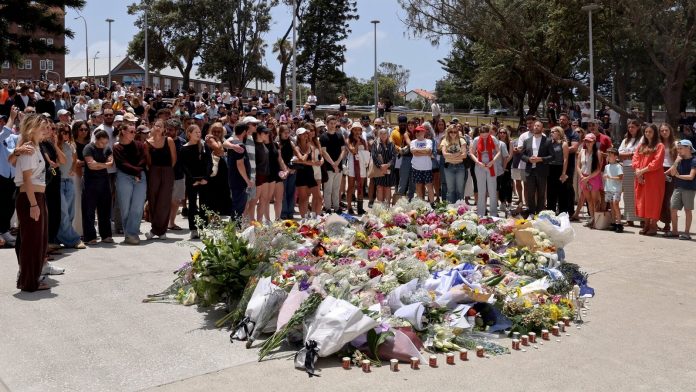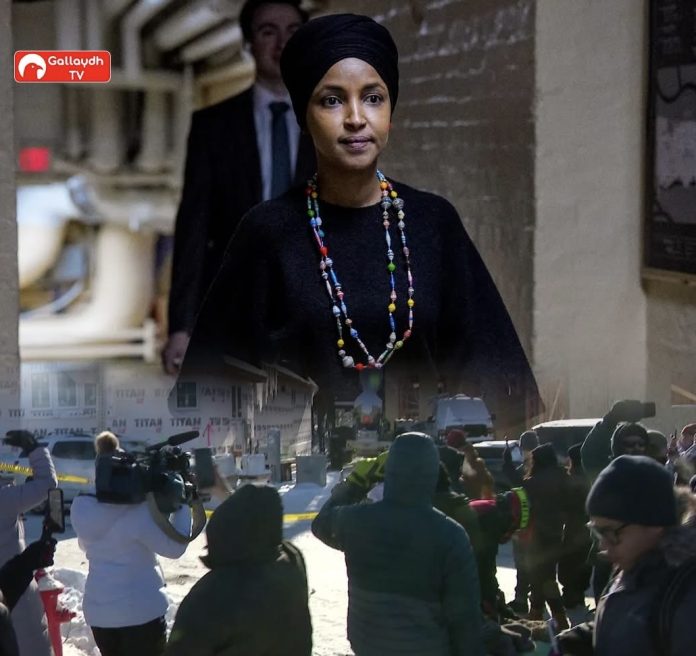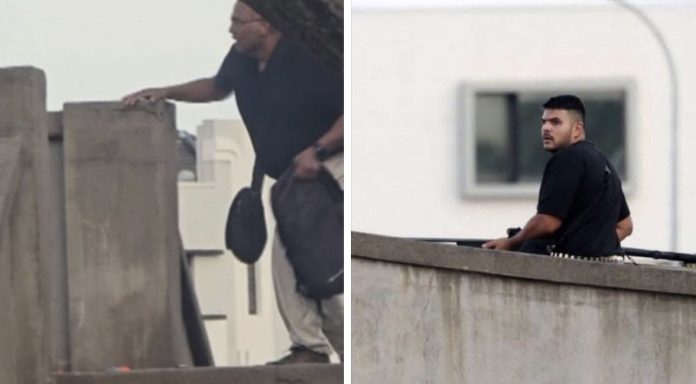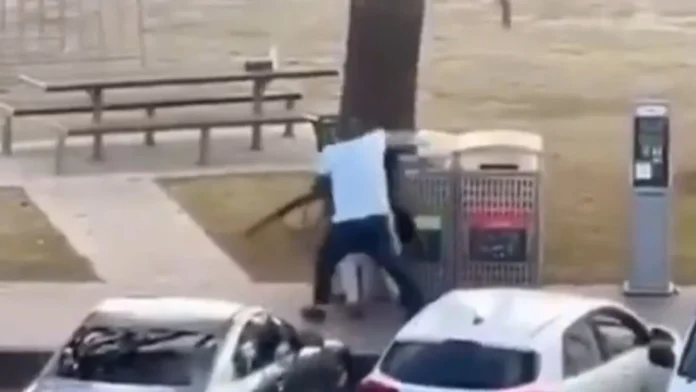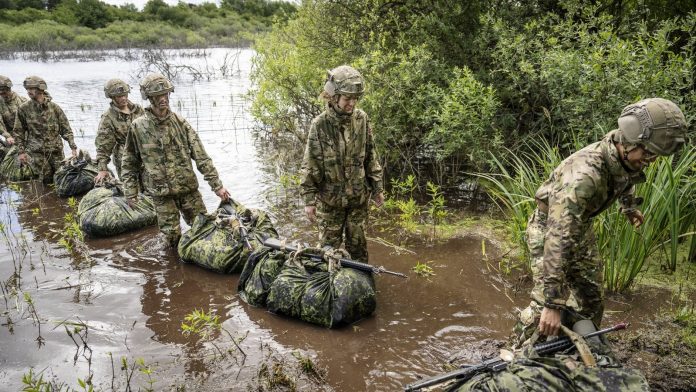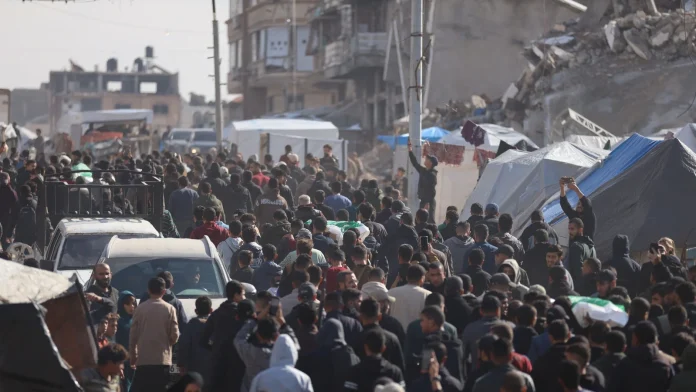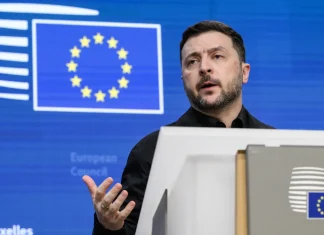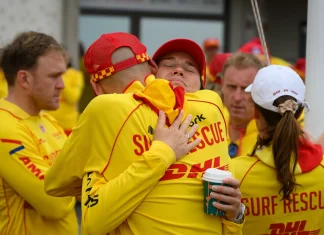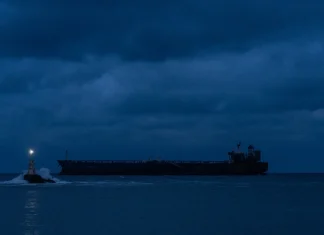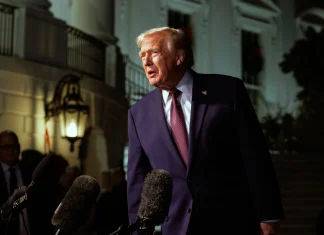At the table in Berlin: a fragile conversation about frozen cash, warm bodies, and the future of a nation
There is a distinct hush in the high-ceilinged room where diplomats and leaders are gathering — not the brittle silence of too many prepared statements, but the kind of low, expectant quiet that arrives before a crucial decision. Outside, traffic threads through Berlin like veins. Inside, chairs were pulled close together; maps and dossiers lay open. Tonight, the talks will swell when EU heads and the NATO secretary general join the already ongoing discussions between U.S. envoys and Ukrainian representatives. The aim is not small: to find a path toward ending a war that has reshaped Europe’s security architecture and tested the international order.
Frozen money, hot politics
At the heart of the debate is a stark arithmetic problem dressed in legal and moral garb: Europe holds hundreds of billions of euros in immobilised Russian assets. Some proposals would convert a portion of that pile — figures as high as €210 billion have been floated — into a long-term loan program to keep Ukraine afloat through its winter and beyond. For many in capitals from Dublin to Vilnius, turning dormant foreign reserves into a lifeline for Kyiv is both symbol and substance: a way to punish an aggressor and rebuild the victim.
“It feels like a justice issue,” a Brussels-based diplomat confided, sitting with a coffee that had gone cold. “These assets were never meant to be used to finance aggression. If we can lawfully redirect them to help rebuild a democracy, why wouldn’t we?”
But the path is thorned with legal, political, and ethical questions. Belgium is cautious. Italy, Malta and Bulgaria have suggested alternatives such as joint EU borrowing. Hungary and Slovakia oppose the idea outright. Ireland — echoing voices across northern and western Europe — argues that using frozen assets is the clearest, most direct option.
Options on the table
- Convert frozen Russian assets into a long-term loan for Ukraine (majority favoured by many EU states).
- Issue joint European debt to fund Ukraine, avoiding direct use of the immobilised funds.
- Explore bespoke bilateral arrangements with the U.S. and other allies to share costs and risks.
Each has pros and cons. Turning assets into a loan is politically satisfying and administratively efficient — but it requires legal groundwork and a united front. Joint borrowing dilutes the moral clarity of the action and may take longer. Small states worry about precedent: what message does it send if frozen foreign assets can be turned into a wartime credit line?
Leaders gather; the clock ticks
EU foreign ministers are meeting in Brussels while Berlin hosts the first, face-to-face phase of Ukrainian-U.S. talks since a controversial 28-point paper was tabled last month. That paper, quietly circulated and widely discussed, included a proposal — one that startled many in Kyiv — to deploy some frozen assets in joint US-Russian investment projects. Moscow’s unexpected reference in the document has hardened some European instincts against any compromise that might reward the aggressor.
A senior EU official, speaking on condition of anonymity, offered a blunt summation: “We are under time pressure. Ukraine’s treasury files show a narrowing window. If we do nothing, the consequences will be immediate and painful for civilians and soldiers alike.” Published estimates in recent briefings suggest Kyiv could face a severe financing gap by April of next year, a date that has become a sobering line on many calendars.
On the ground in Ukraine: cold, hope, and skepticism
In Kyiv, the mood is a mixture of weary resolve and anxious pragmatism. Winter is more than a season here — it is a test of infrastructure, a threat to heating systems, to hospitals keeping lights on in the regions where the lines of front have already shifted. “We will fight with what we have,” said a volunteer coordinator at a community centre that doubles as a shelter. “But we also need to know that someone is holding the other end of the rope.”
Another resident — a teacher who had been collecting donations for displaced families — put it this way: “Words are important. Money is even more so. When the classroom heater goes out, you can’t send a letter to the Kremlin and ask them to be kinder.” These small, direct images bring the abstract debate about frozen assets down to stoves, hospital generators, and schoolrooms.
The strategic red lines
Equally thorny is the question of territory. Ukraine’s leadership has signalled a willingness to discuss security guarantees — even floating the possibility of setting aside its long-cherished bid for NATO membership if rock-solid protections from Western partners can be guaranteed. For many in the EU, however, any deal that requires Kyiv to cede parts of the Donbas or other regions is a non-starter. “If you give up Donbas, you give up the wall that keeps the rest from falling,” warned an EU security analyst in Brussels.
This is not simply a regional quarrel; it is a debate over deterrence, sovereignty, and the rules that have bound post-World War II Europe together. Allowing territorial grabs to stand in order to secure a temporary ceasefire would set a precedent with global ripples.
Drones, airports, and the wider theatre of conflict
Even as talks proceed, the battlefield is not idle. On the other side of the conflict, Russia reported that its air-defence units intercepted dozens of Ukrainian drones overnight — a figure running into triple digits in some official statements — and said many were aimed at Moscow. Airline disruptions followed: Moscow’s Domodedovo and Zhukovsky airports, among others in Russia’s south, temporarily suspended operations. The contest over the skies — and the economic disruptions that ripple from every closure and interception — reminds negotiators of a basic truth: ceasefires seldom stay quiet for long without clear, enforceable mechanisms.
Why this matters to you
You might live continents away from Kyiv or Berlin, but these negotiations matter because they ask a question central to modern international life: how do we marry law and force, finance and principle? If frozen assets can be retooled to underwrite recovery and defend a country against aggression, what does that do for the future of sanctions? If they cannot, what tools remain to deter revisionist powers?
Consider these points: Europe’s unity on sanctions and funding sets precedents for how states respond to aggression worldwide; the economics of war — freezing assets, rerouting funds, underwriting reconstruction — will shape global finance in the decades to come; and, perhaps most importantly, the human costs remain immediate and brutal.
Closing the room, opening a path
Tonight’s session will broaden into a summit in Brussels where leaders will attempt to firm consensus. The air will be thick with competing urgencies — humanitarian, strategic, legal, domestic political pressures. For negotiators, there will be technical conversations about bonds, legal mechanisms, and conditionality. For citizens, there will be the simpler, sharper question: who will keep the lights on?
And for each of us reading from afar, there is another question: what sort of international order do we want to live in? One where sovereignty can be traded away at the negotiating table? Or one where frozen assets can be mobilised to protect people and punish unlawful aggression? The choices being shaped in Berlin and Brussels this week will ripple far beyond their conference rooms. The task for leaders is to blend courage with caution, law with compassion — and to remember the faces behind the dossiers.
“We need decisive action, not just statements,” an aid worker said as she packed thermal blankets bound for the east. “If the world hesitates now, the people who suffer are the ones who can’t wait.” What will you, as a global citizen, ask of your leaders?





